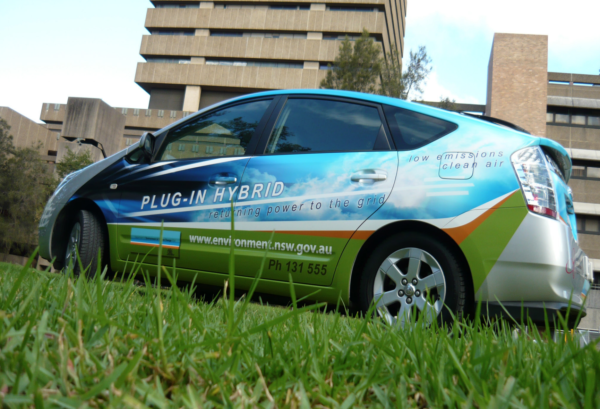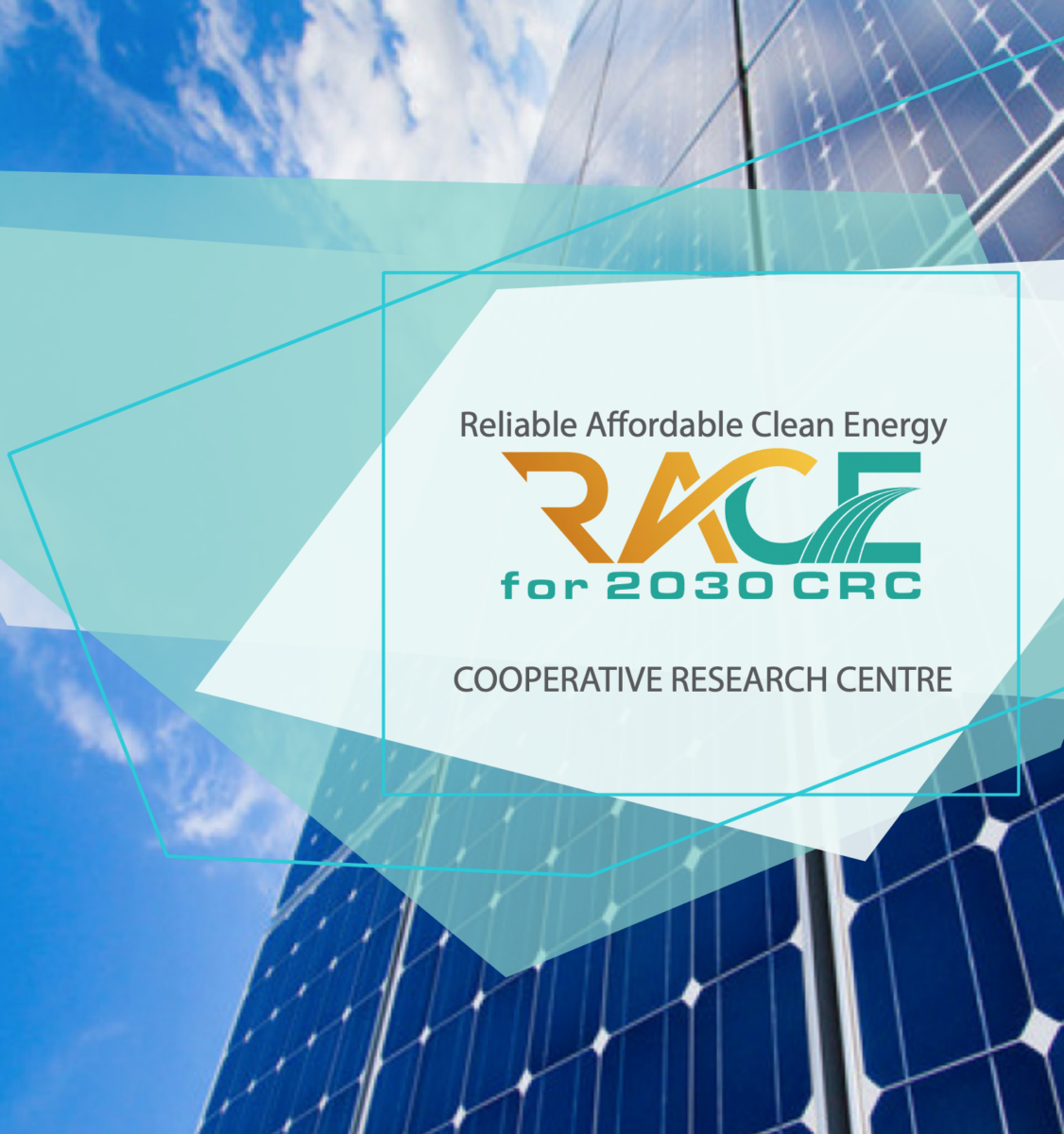What Karen Andrews giveth, Scott Morrison taketh away. Yesterday afternoon, as one group of researchers — at the Energy Transition Hub — was mulling over its future after the abrupt withdrawal of $1.75 million in funding from the Australian Department of Foreign Affairs and Trade, Karen Andrews, Federal Minister for Industry Science and Technology was announcing $68.5 million in funding for the Reliable Affordable Clean Energy for 2030 Cooperative Research Centre.
RACE for 2030, as the CRC bid is more catchily referred to, is headed by Jonathan Jutsen, who is also CEO of the Australian Alliance for Energy Productivity, and was Founder, and former CEO and Chief Innovation Officer of Energetics, consultants to business on energy and carbon management.
The bid for funding of $300+ million was initiated in 2018 by the University of Technology Sydney’s Institute for Sustainable Futures, and its 90 partner organisations have since committed around $280 million in cash and in-kind contributions. The government’s funding brings the total kitty to be invested over the coming decade to around $350 million.
Partners to the CRC include the University of New South Wales, Monash University, the University of South Australia, Ausgrid, Endeavour Energy and the NSW Department of Planning and Environment; and many pioneers in enabling distributed energy resources, such as FlowPower, Planet Ark Power and SwitchDin.
Meeting the requirements of Australian people
The consortium’s bid was focused on, “A customer-centred clean-energy transition”, the concept at the heart of Minister Andrews’ announcement made at the residence of Sarah and Aaron Hall, who run their beauty-therapy business from home in the Brookwater eco community west of Brisbane.
https://twitter.com/karenandrewsmp/status/1236583809782431744?s=20
Andrews described the couple as a perfect example of “a small business operating from home”, for whom “energy inputs and energy prices are so important … every day when I talk to businesses, the single biggest issue that they raise with me is the cost and reliability of their energy,” the minister said.
Accompanying the announcement, the joint press release from the office of Angus Taylor, Federal Minister for Energy and Emissions Reductions, Minister Andrews described the CRC funding as, “a perfect example of how the Morrison Government is taking climate action now, without dipping into the pockets of hard-working Australians”.
Other rhetoric surrounding the announcement referred to “technology, not taxes”, helping “Australia play its role in reducing global emissions”, “deploying the right technology when and where it is needed”, and “practical solutions that reduce emissions, cut power bills and protect and create jobs”.
The potential practical outcomes of RACE for 2030, one of 30 CRCs funded by the government since 2013, are listed in the joint press release as: reducing energy costs by up to 25%, reducing emissions by up to 20 million tonnes, and reaping a forecast $8 billion economic benefit by 2034.
RACE for 2030 is also expected to inform policy for the government’s much heralded technology roadmap, and to bring to life the Australian Energy Market Operator’s prediction that properly managed rooftop solar resources could provide 25% of Australia’s day-to-day energy needs by 2040.
Four streams of research
The technology partnership behind RACE for 2030 identified four streams of research aimed at “integrating clean distributed energy into the grid”:
RACE for Business includes projects to improve the productivity of energy used in the supply chains of Australian businesses; to electrify process heating, replacing current fossil-fueled energy sources with renewables; and to modulate energy load in industry in response to cost-reflective real-time pricing.
RACE for Homes encompasses enabling solar-powered pre-cooling of homes when the resource is at its best, thereby enabling reduced energy use at night when power prices increase; rewarding flexible demand for power from the residential sector,with cost-reflective energy pricing and incentives rather than the current flat tariffs paid to energy-exporting consumers; and developing smart algorithms to optimise home energy use and supply from rooftop solar, battery storage and the grid.
RACE for Networks includes projects to map the scale of the distributed-energy-hosting capacity of existing distribution networks, leading to precision planning for grid investment and DER; to enhance regulatory processes for demand management assessment and approval; and to enable cost-effective development and operation of embedded and islanded microgrids.
RACE for Everyone intends to find out exactly what consumers in homes and businesses want from the energy system. As in other streams, there are numerous projects, one of which seeks to develop business skills, tools and confidence in managing energy and energy productivity.
Jutsen said the design of the program as proposed for funding would also be continually updated to reflect developments in technologies and Australia’s energy environment.
Energy leaders welcome the announcement
“It’s a really significant program,” Renate Egan, Co-Founder of Solar Analytics, one of the RACE for 2030 partners and a member of the advisory committee that set up the RACE for 2030 bid, told pv magazine.
“It’s going to be really good for the energy transition to have that kind of 10-year research vision instead of so far into the future that it’s not relevant, or fighting spot fires as they arise.”
All participants in the launch of the new CRC acknowledged that Australia’s uptake of rooftop solar PV, which is forecast to power 3 million households by the end of 2020, is at the heart of possibilities for a smart two-way — energy-to-consumer and vice versa — electricity system in Australia.
Said Andrews, “We do have very high take-ups of solar. If you look around where we are now, most houses have solar panels on their roof. I have solar panels on my own roof. Many businesses are starting to look at opportunities that solar delivers to them.”
The Halls, owners of the announcement-hosting home, explained how they have achieved a 75% reduction in their energy bills by combining effective insulation, LED lighting and energy-efficiency measures alongside the generation of a sub-13 kW rooftop solar system.
A dual role for EVs
Jutsen emphasised the utility that electric vehicles will bring to smoothing low-cost energy supply from solar for residential use:
“Imagine if you had an electric vehicle that not only was your transport approach, but also provided you power to the house during a shutdown or when electricity prices are high … without having to invest in a separate, standalone battery.”

Photo: RACE for 2030
Kate McGrath, Deputy Vice Chancellor of Research at UTS said associated avenues for investigation by the CRC include “the hydrogen economy” and “negative carbonisation”, which she described as “plant-based energy sources” that “suck carbon out of the atmosphere” which may have been a reference to UTS research into algae as a source of biofuel.
The scope of the CRC is broad, but will settle into a program of work focused on both long and short-term initiatives over coming months.
The urgent need for appropriate transmission and network infrastructure has not been omitted. Jutsen said, “We call this RACE for 2030 because we see some real urgency. It’s not just reliable, affordable, clean energy. We’ll be doing a lot of things to address here-and-now problems with networks and technology.”
This content is protected by copyright and may not be reused. If you want to cooperate with us and would like to reuse some of our content, please contact: editors@pv-magazine.com.









1 comment
By submitting this form you agree to pv magazine using your data for the purposes of publishing your comment.
Your personal data will only be disclosed or otherwise transmitted to third parties for the purposes of spam filtering or if this is necessary for technical maintenance of the website. Any other transfer to third parties will not take place unless this is justified on the basis of applicable data protection regulations or if pv magazine is legally obliged to do so.
You may revoke this consent at any time with effect for the future, in which case your personal data will be deleted immediately. Otherwise, your data will be deleted if pv magazine has processed your request or the purpose of data storage is fulfilled.
Further information on data privacy can be found in our Data Protection Policy.